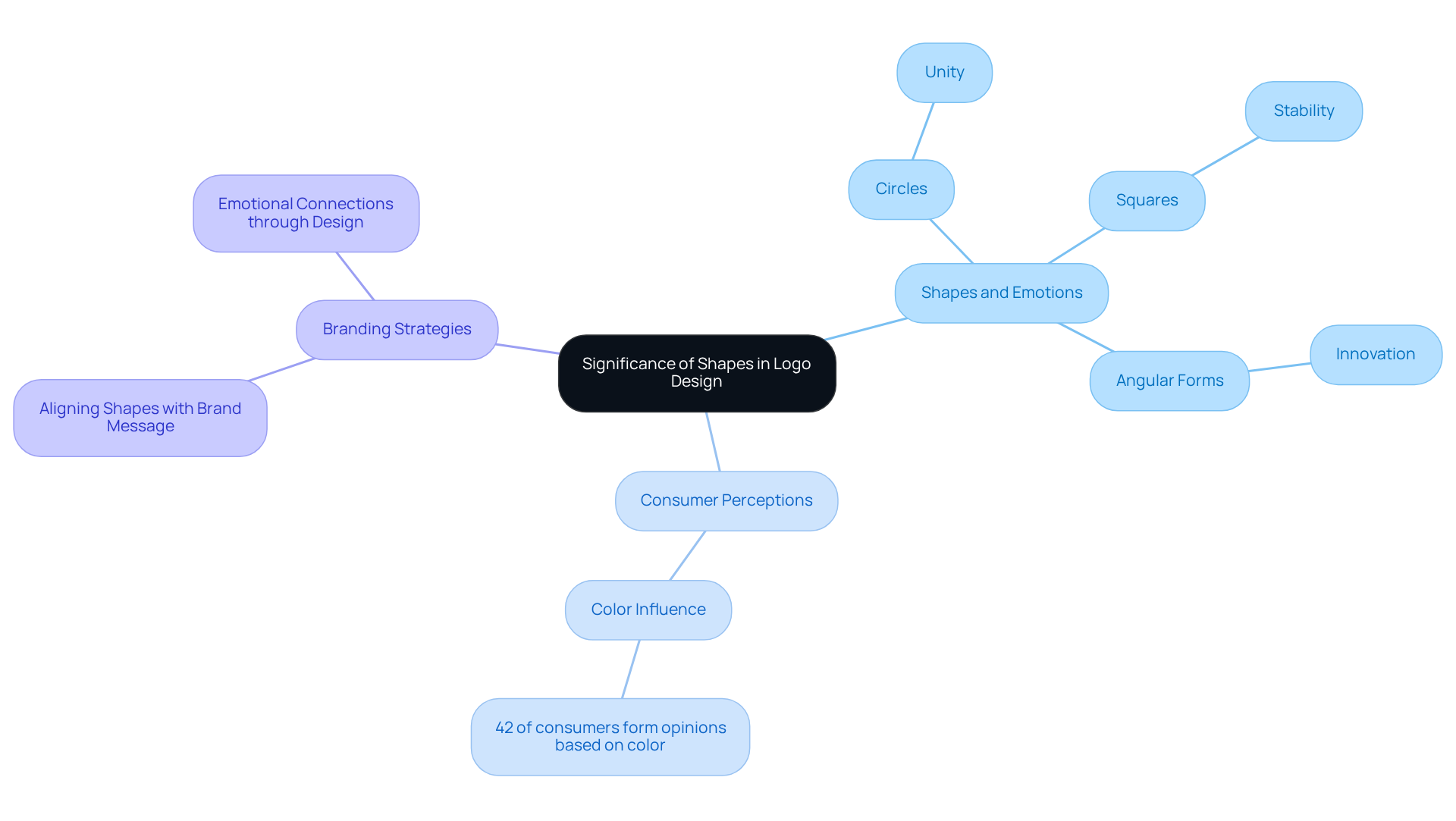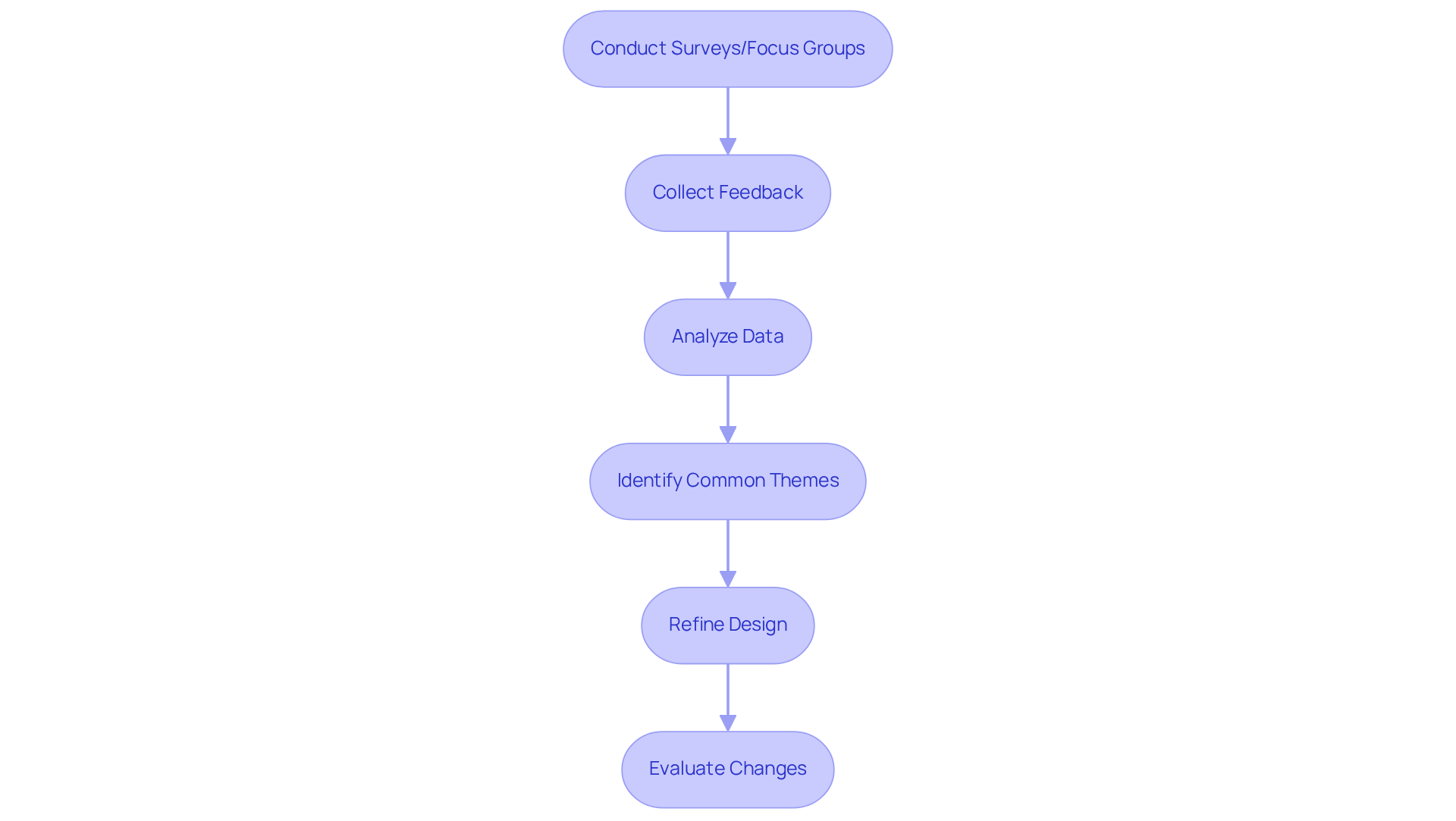Overview
In the world of branding, many startup founders struggle with designing logos that truly resonate with their audience. This challenge can lead to frustration, as an ineffective logo may fail to convey the right emotions and values, ultimately hindering brand recognition. Understanding the significance of shape psychology is crucial; different shapes evoke specific feelings and associations, which can either connect with your audience or leave them feeling indifferent.
Consider how successful logos utilize shapes to communicate their brand's essence. For instance:
- Rounded shapes often evoke feelings of warmth and friendliness.
- Sharp angles can suggest innovation and dynamism.
However, it’s not just about selecting shapes; it’s about refining your designs based on audience feedback. This process can feel daunting, but it’s essential for enhancing brand engagement and ensuring your logo speaks to the hearts of your consumers.
At RNO1, we believe in nurturing your vision. By embracing the feedback from your audience and iterating on your designs, you create a logo that not only stands out but also resonates deeply with your target market. Remember, the journey of logo design is not just about aesthetics; it's about crafting a visual story that connects with people. Together, we can navigate this path, ensuring your brand leaves a lasting impression.
Introduction
In the world of branding, the shapes used in logo design hold remarkable influence, often forming the very first impression a consumer has of a company. This initial encounter can significantly impact how a brand is perceived. Understanding the psychological effects of these shapes can open the door to stronger connections between brands and their audiences. Yet, many designers find themselves asking: how can they create logos that not only grab attention but also communicate the intended message with clarity? This article aims to provide a compassionate exploration of three essential practices that can elevate logo design into a strategic asset for brand identity. We will guide you through the nuances of:
- Selecting shapes
- Embracing audience feedback
- Employing effective design techniques
All while nurturing your creative journey.
Understand the Significance of Shapes in Logo Design
In the world of visual identity design, logos in shapes play a crucial role, serving as visual shorthand that encapsulates a company's identity and values. Many of us may not realize how much shapes influence our perceptions. For example, circles often evoke feelings of unity and community, while squares can suggest stability and reliability. These associations are vital when designing logos in shapes that truly resonate with your audience.
It's concerning to think that consumers often make quick judgments about a company based on its emblem design. This highlights the importance of selecting shapes that align with your organization's message. A tech startup might lean towards angular forms in logos in shapes to convey innovation and dynamism, while a wellness company may opt for softer, rounded logos in shapes to communicate calmness and friendliness.
By tapping into the psychological effects of shapes, designers have the power to create symbols that not only draw interest but also nurture emotional connections with consumers. Research indicates that 42% of consumers form their opinions about a company based solely on its color scheme, underscoring the intricate relationship between form and color in marketing.
Brands that thoughtfully apply the principles of shape psychology, particularly through the use of logos in shapes, can significantly enhance their market presence and cultivate deeper engagement with their audience. We invite you to reflect on your own experiences and consider how the shapes in your branding speak to your values and aspirations.

Apply Effective Techniques for Shape-Based Logo Creation
Creating impactful logos in shapes can seem overwhelming, particularly when you’re attempting to convey your brand's essence. Many founders struggle with understanding how to visually represent their core values and connect with their target audience. This challenge can lead to logos that miss the mark, leaving potential customers confused or disengaged. It's important to recognize that logos in shapes, such as squares and rectangles, can communicate a sense of order and professionalism. Think of how IBM and Microsoft use these forms to project stability and reliability. Statistics reveal that 38% of consumers choose brands based on their emblems, highlighting the importance of thoughtful design.
Moreover, incorporating negative space in your logo can lead to innovative designs that capture attention. A great example is the FedEx logo, which cleverly integrates an arrow to symbolize speed and accuracy. As industry experts remind us, "A well-crafted emblem becomes a symbol that communicates without words." This underscores the necessity for clarity and purpose in your design process. Remember, it’s also vital for your logo to be versatile and scalable, ensuring it looks great on everything from business cards to billboards.
Regularly promoting your branding elements can significantly boost your income—by as much as 23%. This statistic serves as a strong encouragement to focus on these essential design factors. By embracing these strategies and avoiding common pitfalls, like cluttered layouts that confuse viewers, you can create logos in shapes that are not only visually appealing but also strategically aligned with your brand's identity. This alignment will enhance recognition and foster deeper engagement with your audience. You're not alone in this journey; with the right approach, you can craft a logo that resonates and truly reflects who you are.

Test and Refine Logos Through Audience Feedback
Testing and refining designs through audience feedback is a vital step in the design process. Many founders face the challenge of ensuring their designs resonate with their target audience. By conducting surveys or focus groups with a representative sample, you can invite participants to share their thoughts on your symbol, exploring the feelings it evokes and its alignment with your company's identity. Utilizing tools like online surveys can streamline this process, enabling quick and scalable feedback collection.
Research shows that 90% of users expect a consistent experience across all platforms, highlighting the importance of gathering uniform feedback. Once you collect this feedback, take the time to analyze the data, looking for common themes and insights. For instance, if several participants express feelings of confusion about an emblem, it may be crucial to simplify the design. Gradual improvements based on audience feedback not only enhance effectiveness but also foster a sense of ownership among consumers, leading to increased loyalty to your brand.
By prioritizing audience feedback, you can ensure that your creations are not just visually appealing but also meaningful and impactful. A distinctive emblem can elevate recognition by as much as 80%, with 75% of individuals identifying a company by its emblem. This underscores the significance of a feedback-focused strategy. As Parker Lee, an award-winning creative specializing in logo design, wisely states, "A well-designed logo can have a substantial return on investment by enhancing brand recognition and credibility." Embracing this approach can empower you to create designs that truly resonate with your audience.

Conclusion
Designing logos in shapes is not just an aesthetic choice; it’s a strategic journey that communicates your brand’s identity and values. The significance of shapes in logo design goes beyond mere visual appeal; they evoke emotions and perceptions that can profoundly influence consumer behavior. By understanding the psychological aspects of shapes, you can create logos that resonate deeply with your audience, fostering emotional connections and enhancing brand recognition.
Throughout this article, we have highlighted key practices for effective logo design using shapes. From recognizing the emotional impact of different shapes to incorporating techniques like negative space, each aspect plays a crucial role in crafting a logo that aligns with your brand’s essence. It’s essential to remember that audience feedback is invaluable in refining designs; it ensures that your logos not only capture attention but also convey your intended message clearly and effectively.
Ultimately, the journey of designing a logo in shapes is one of exploration and refinement. By embracing the principles discussed and actively seeking feedback, you can create logos that are not only visually striking but also meaningful and impactful. As you strive to stand out in a competitive landscape, prioritizing thoughtful shape-based design can significantly enhance your brand identity and foster lasting connections with your consumers. Together, let’s embark on this creative journey, ensuring your logo tells the story of your brand with warmth and clarity.
Frequently Asked Questions
What role do shapes play in logo design?
Shapes serve as visual shorthand that encapsulates a company's identity and values, influencing perceptions and judgments about the brand.
How do different shapes affect consumer perceptions?
Circles often evoke feelings of unity and community, while squares suggest stability and reliability. These associations are crucial when designing logos that resonate with the audience.
Why is it important for companies to choose the right shapes for their logos?
Consumers make quick judgments about a company based on its logo design, so selecting shapes that align with the organization's message is vital for effective branding.
What types of shapes might a tech startup use in its logo?
A tech startup might lean towards angular forms to convey innovation and dynamism.
What types of shapes might a wellness company use in its logo?
A wellness company may opt for softer, rounded shapes to communicate calmness and friendliness.
How do shapes and colors relate in logo design?
The relationship between form and color is intricate, with research indicating that 42% of consumers form opinions about a company based solely on its color scheme.
What benefits do brands gain from applying shape psychology in their logos?
Brands that thoughtfully apply shape psychology can enhance their market presence and cultivate deeper engagement with their audience.




